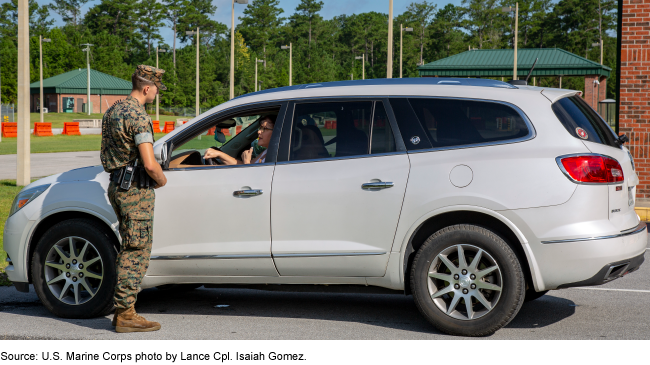Military Personnel: Perspectives on DOD's and the Military Services' Use of Borrowed Military Personnel
Fast Facts
The military services sometimes divert servicemembers from their assigned units to perform other duties such as base security, fire and rescue, and running the gym or cafeteria. We looked at this borrowing of military personnel and its impact on military missions.
The Defense Department, Army, Navy, and Air Force do not centrally track this practice. DOD and Army officials said they don't need to do so—especially given the resources that would be needed to establish and maintain such a process. Officials told us the practice of borrowing military personnel is not extensive and that other mechanisms already keep track of force readiness.

Highlights
What GAO Found
Policies on the use of borrowed military personnel vary among military services. Borrowed military personnel refers to military personnel used for duties outside their assigned positions, such as security protection. DOD policy acknowledges that there may be instances in which military personnel can be used to appropriately satisfy a near-term demand but that DOD must be vigilant in ensuring that military personnel are not inappropriately utilized, particularly in a manner that may degrade readiness. Additionally, the Army and the Marine Corps have their own policies that describes how military personnel may be used on a temporary basis. DOD and the Army, Navy, and Air Force do not centrally track their use of borrowed military personnel, nor do they assess any impacts of that use on the readiness of units and personnel to accomplish their assigned missions. According to DOD and Army officials, the relatively limited use of borrowed military manpower, their limited impacts on readiness, and the existence of other readiness reporting mechanisms serve to obviate the need to collect and analyze this information centrally—especially given the resources that would be required to establish and maintain such a reporting process.
Why GAO Did This Study
The House Armed Services Committee has questioned whether DOD continues to divert servicemembers from their unit assignments to perform nonmilitary functions that could be performed by civilian employees.
House Report 116-120, accompanying a bill for the National Defense Authorization Act for Fiscal Year 2020 included a provision for GAO to assess the levels and impacts of borrowed military personnel. This report examines DOD's and the military services' policies on the use of borrowed military personnel, the tracking and reporting of their use of borrowed military personnel, and any impacts of that use on readiness.
